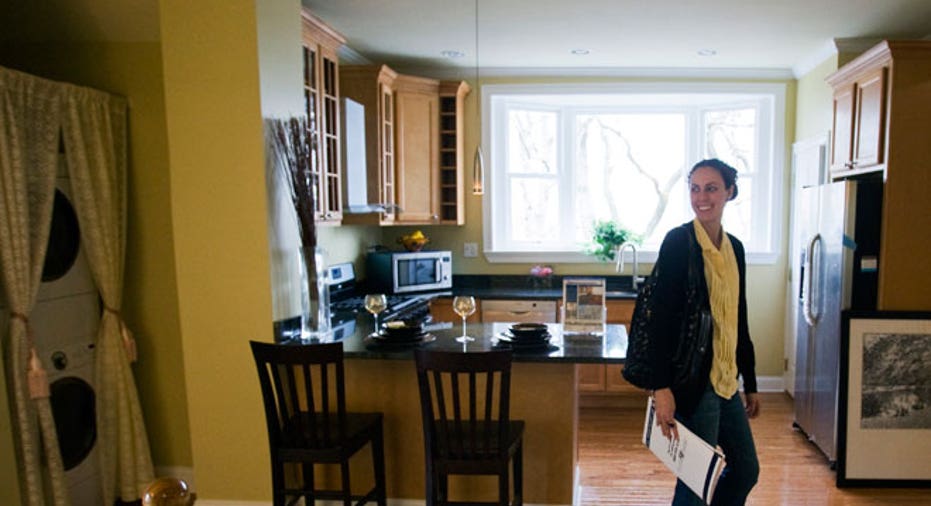Your Open Floor Plan is Deadly

Experts call it a fire crisis. New, lightweight residential construction methods, green building materials, open floor plans and larger square footage are making it harder and more dangerous for firefighters to safely extinguish house blazes and for occupants to safely escape them.
"It's estimated that most homes built within the past 20 years contain these dangerous lightweight materials, which are designed to carry a greater load with less material by using prefabricated components," says Russell Fleming, president of the National Fire Sprinkler Association.
The lightweight construction materials are more cost-effective and environmentally friendly, but they allow fires to spread much more rapidly, reducing the time homeowners have to escape a fire -- and the time firefighters have to safely extinguish it.
Traditionally, floor joists that held up the floor would be a 2x6 piece of lumber every 12 inches, explains Peter Struble, practitioner in residence in the Fire Science Program at Henry C. Lee College of Criminal Justice and Forensic Sciences at the University of New Haven and the fire chief in Wallingford, Conn.
"Now they're using what's called an engineered wood i-joist, which is much lighter weight and is not as substantial, and a lot of times it's thin pieces of wood glued together. It's extremely strong as long as it's not being attacked by fire," says Struble.
"When it's attacked by fire, it fails abruptly," he says.
The National Institute of Safety tested traditional wood floor joists and the engineered i-joist's burning rates. It took 19 minutes for the traditional wood to burn versus six minutes for the engineered wood i-joist, says Struble.
That spells danger for firefighters, especially with basement fires. When a firefighter enters a burning residence, the floor may already be gone or the outside might just be a facade with everything inside burned away already. With a little bit of weight, the entire floor collapses and firefighters go down with it.
"Certainly we don't have as much time in the building now; that's going to impact anyone still left in the home and our ability to get to them, and certainly it's going to cause more damage to the home," says Struble.
Home insurance covers fire damage up to the limits of your policy. See these home insurance basics.
Open areas
Aside from the building materials used in today's homes, other factors contribute to quicker burn rates including larger square footage.
"Back in the 1960s the average single family home was about 1,200 square feet. It's not unusual to have a home that's now 3,000 to 4,000 square feet," says Struble.
What's more, with open floor plans, all the rage in new home builds, a blaze spreads more quickly. Couple that with lightweight building materials and large square footage and firefighters see early collapses, rapid fire spread and more intense fires than they've seen in the past 30 years, explains Struble.
What's burning?
Contributing to today's home-fire crisis is the contents of our homes.
"We know that today's contents burn hotter with more BTUs," says Struble. Many items have a plastic or hydrocarbon base so they burn more intensely and create more energy.
"Newer plastic fillings in sofas, chairs, and mattresses burn much faster than older fillings like cotton, reducing the time it takes for a room to heat to 1,100 degrees and reach flashover -- the temperature point at which the heat in an area is high enough to ignite all flammable materials," says Fleming.
One reenactment by Underwriters Laboratories built two homes and set a room full of legacy furniture from the '50s to '70s on fire along with a room with modern furniture. The legacy furniture reached flashover in 29.25 minutes; the room with modern furnishings took 3.25 minutes.
One of the reasons furniture is cheaper today and in greater quantity than 30 years ago is because manufacturing techniques have improved. Furniture also contains materials that are economical and durable that are typically made of plastics and synthetics, which give off a tremendous amount of heat when they burn.
Making houses safer
Now that firefighters understand how newer-home fires burn, fire services are working with building officials to strengthen building and fire codes and to introduce enhancements that will help people get out of their homes quickly during a fire and help keep fires from spreading.
Struble says that in the short-term protecting i-joists with rated sheetrock and having states require a hardwired fire alarm system -- where working smoke detectors don't depend on someone changing the battery -- is key, since getting people out of the house early is crucial. When the fire department knows people are out, it becomes a property loss problem and not a life loss problem.
The ultimate solution is the installation of residential sprinklers in new homes. Currently, California and Maryland are the only states that require fire sprinklers in new home construction, despite the International Residential Code requiring it in 2009 and in 2012; and it will appear again in the 2015 code.
The cost of installing a residential sprinkler system in new construction is $1.61 per square foot nationally.
"While many states have rejected the International Code Council's requirement for all new one- and two-family homes to include fire sprinklers, the fact remains that fire sprinkler systems would offset the danger created by lightweight construction methods and today's synthetic furnishings, providing greater protection to building occupants and emergency first-responders," says Fleming.
The first step is to get sprinkler systems into today's new homes, which are tomorrow's older homes.
The original article can be found at Insure.com:Your open floor plan is deadly